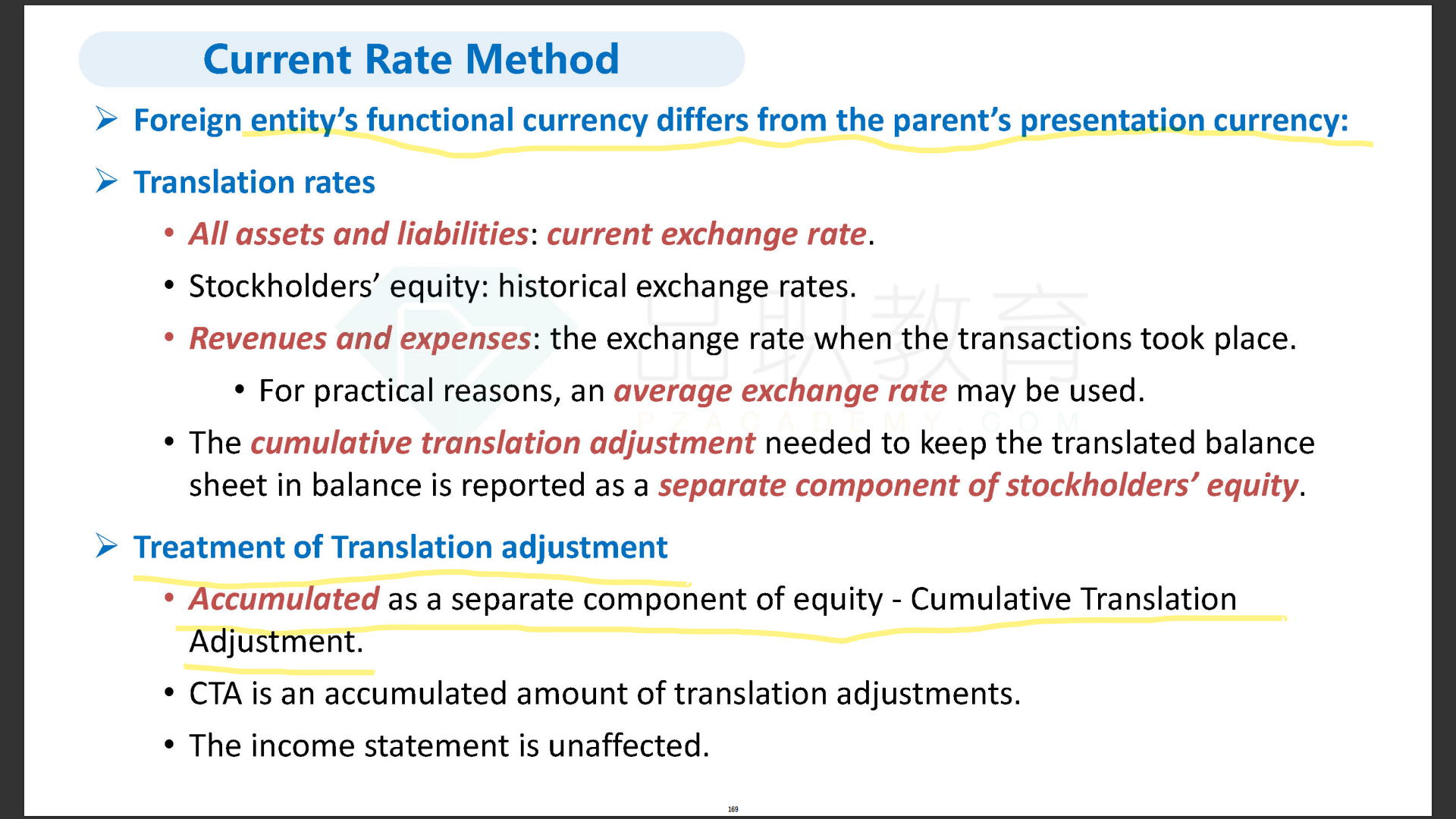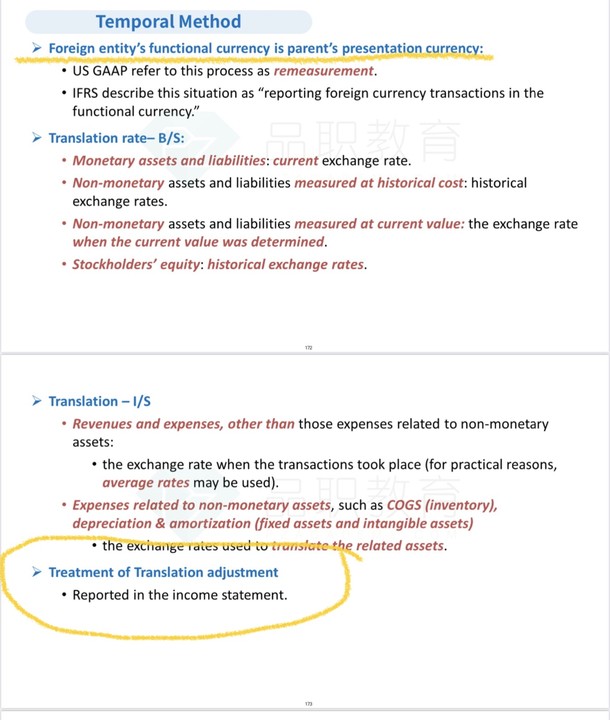NO.PZ2018111303000068
问题如下:
Scenery manufacturer is a US-based company, Scenery has a subsidiary, XZZ, operates in CHINA, XZZ was acquired in 2018 and has never paid a dividend. It records inventory using the FIFO method. RMB is expecting depreciation in the future.
Compared with using the RMB as XZZ’s functional currency for 2018, if the US dollar were the functional currency, it is most likely that Scenery’s consolidated:
选项:
A.Gross profit margin will be higher
B.A/R turnover is higher
C.current ratio will be higher.
解释:
C is correct.
考点:current method VS temporal method.
解析:
使用RMB为functional currency:转换用current rate method。
如果美元是functional currency( = reporting currency), 转换用temporal method.
LC = RMB 预期会贬值。
A选项:gross profit margin=(sales-COGS)/sales,不同转换方法都用平均汇率转换sales,因此只需要比较COGS。,在temporal method下,COGS是用卖掉的存货采购时候的历史汇率转换(FIFO下对应较早的汇率),在current method下, COGS是用较新的平均汇率转换,因为RMB在贬值,所以temporal method下的COGS比current method的要大,也就是说,Gross profit margin=(Sale - COGS)/Sales, temporal method的分子要更小,所以Gross profit margin也更小。选项A不正确。
B选项:A/R turnover=Sales/ AR, 在2种方法下,sale都是用average rate转换, AR都是用Current exchange rate转换,所以这个比率是一样的。选项B不正确。
C选项,current ratio= (cash+AR+INV)/CL, 因为在temporal method下, 存货属于non-monetary, 所以要用历史汇率(较高的汇率)转换,所以INV转换后的价值要更高,也就是分子更大导致比率更大。
请注意“Compared with using the RMB as XZZ’s functional currency for 2018, if the US dollar were the functional currency,"
根据这句话,题目意思是如果使用temporal method而不是current rate method,母公司的报表会如何变化——所以注意,这里是temporal method和current rate method的比较,其实跟存货使用LIFO还是FIFO已经没有关系了(因为两种货币兑换下公司都用FIFO)
这是一个答案的解析,这道问的不是跟FC=RMB RC=US 所以第一种是TEMPORAL method吗? 如果换成US dollar,FC不就于母公司RC了吗,这时候不就Current method吗?所以这道问的不是跟temporal method 相比,如果FC换成美元,current method 下母公司的报表如何变化吗?





